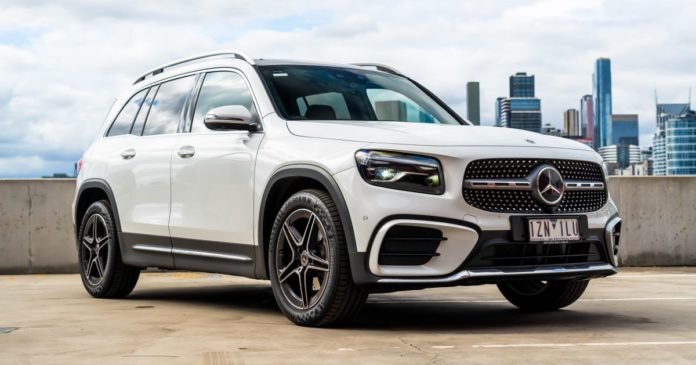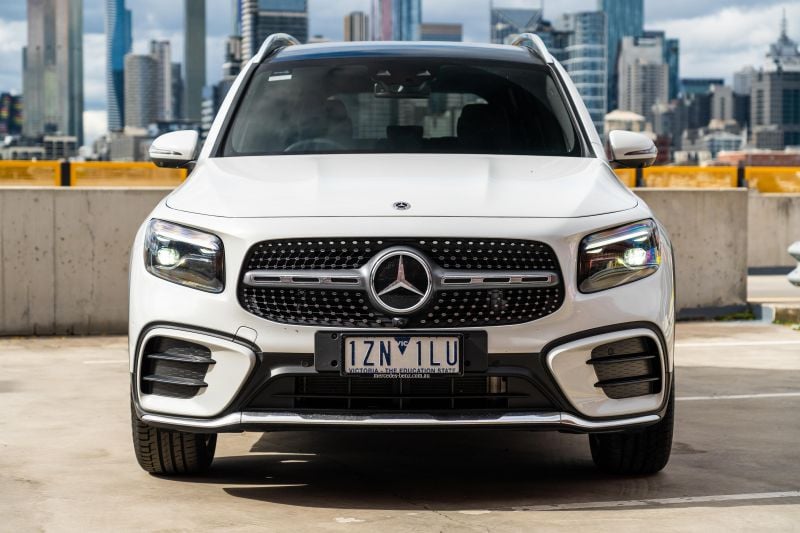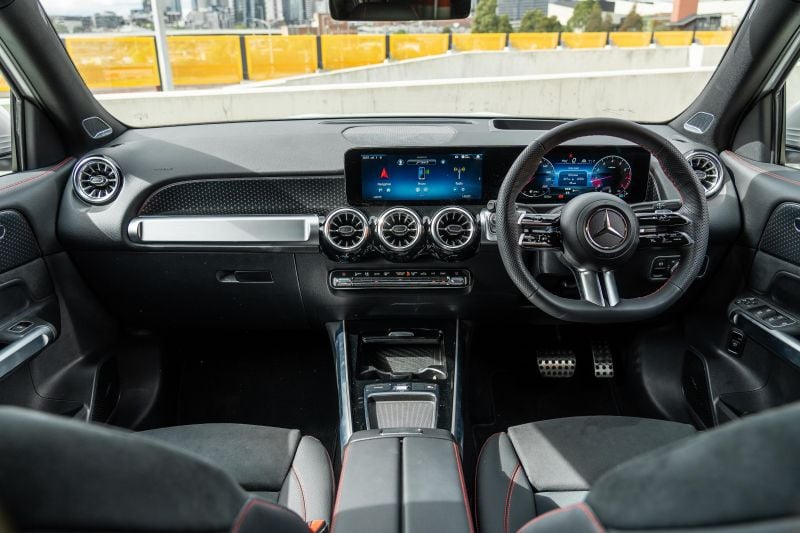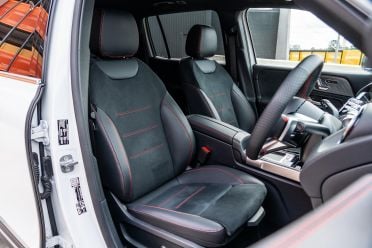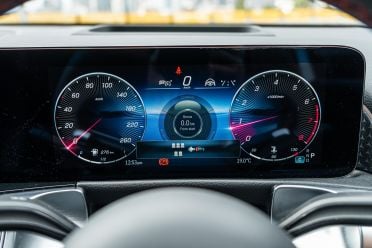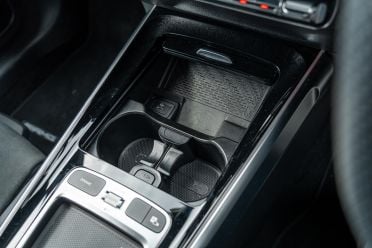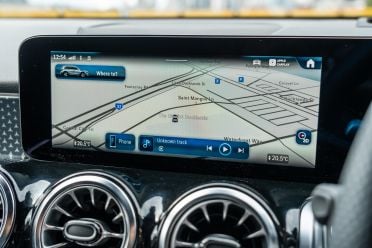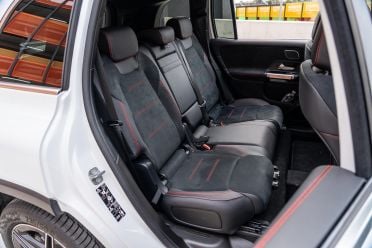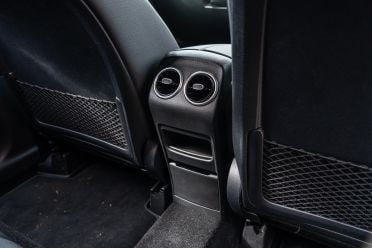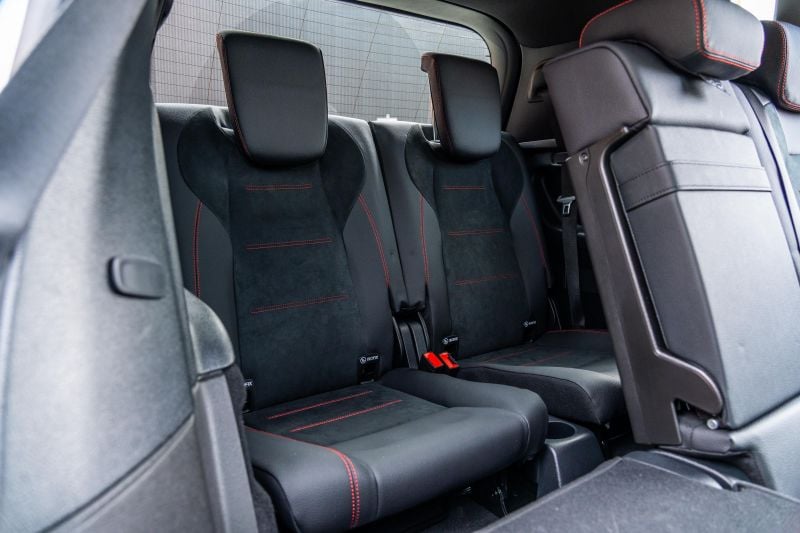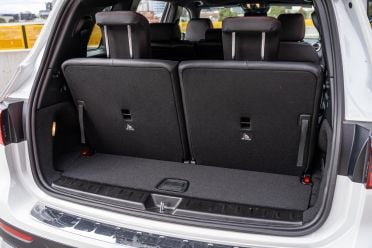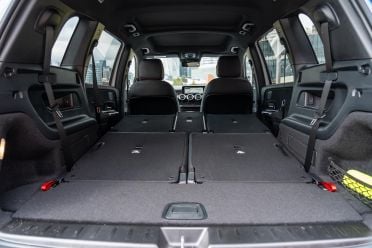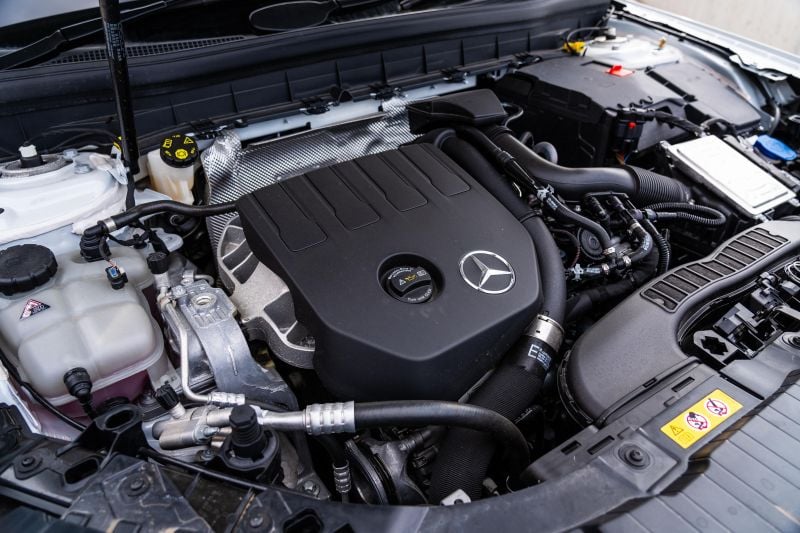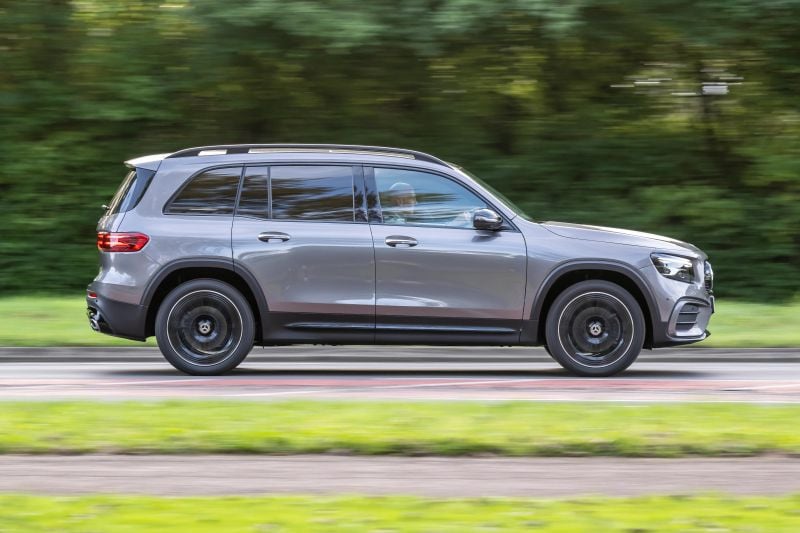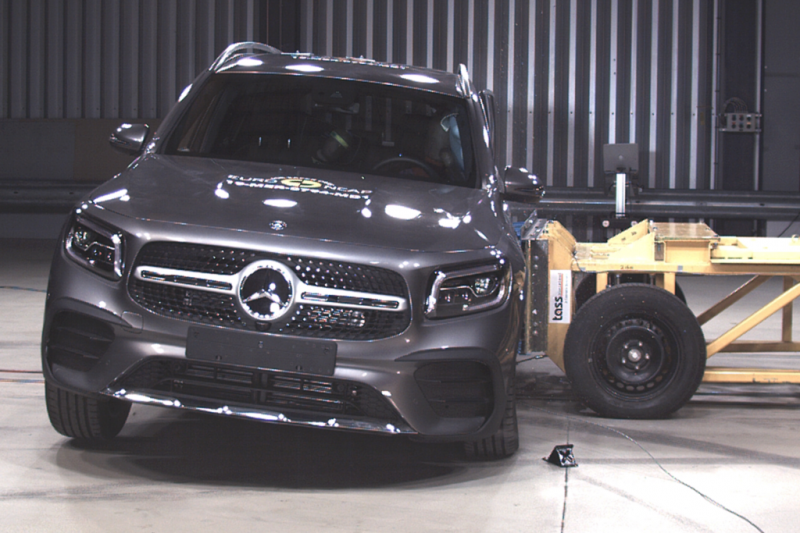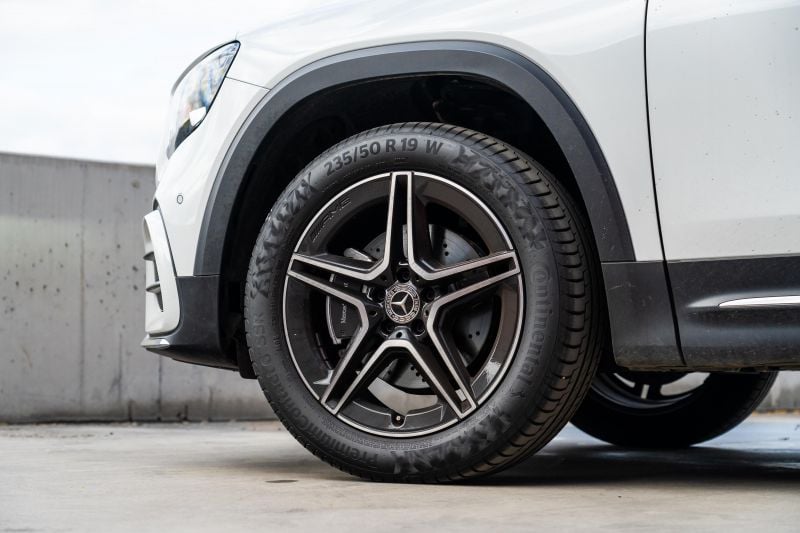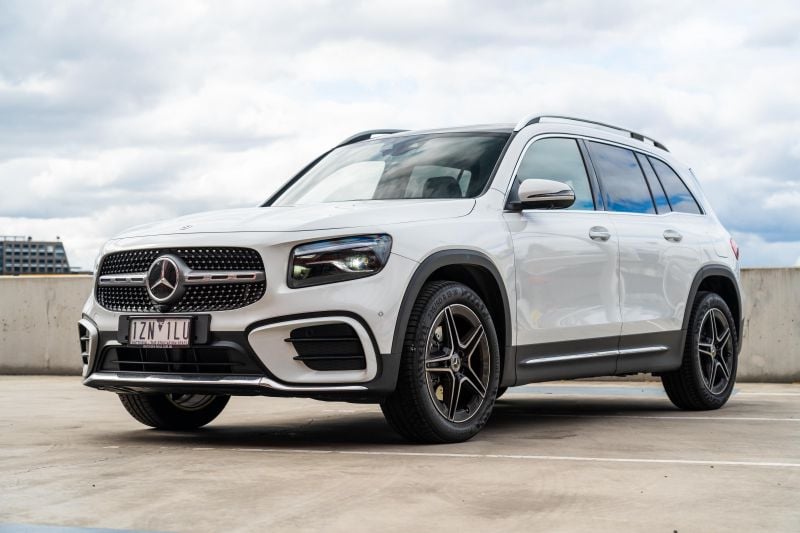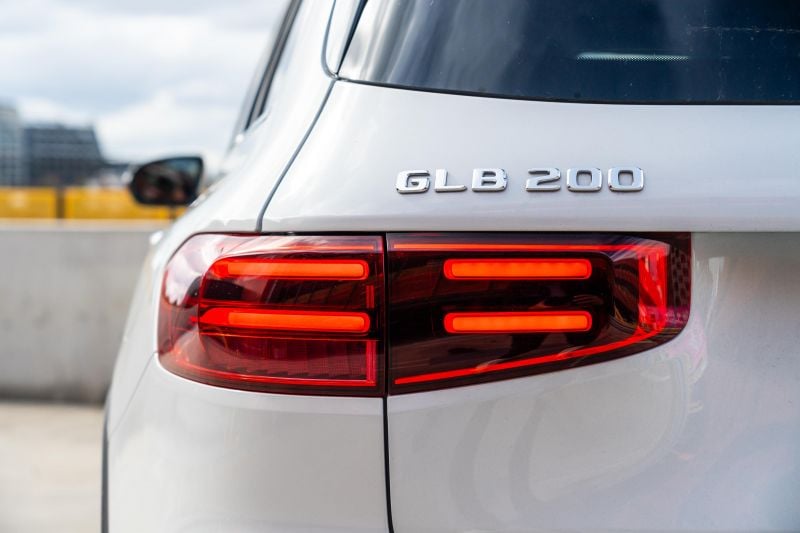Mercedes-Benz has given its smallest seven-seat SUV an update.
The GLB – which is built on the same bones as the smaller, cheaper A-Class and GLA – is almost as big as a GLC on the outside, and packs a boxy body to maximise interior space. It’s a formula few brands have followed in Australia.
Not only is the GLB dwarfed by the other two seven-seat SUVs in the Mercedes-Benz range, the GLE and GLS, it’s smaller than mid-sized SUVs with seven-seat options like the Nissan X-Trail and Mitsubishi Outlander.
It’s also priced in a strange corner of the crowded SUV world. With a starting price of $74,000 before on-road costs, it sits between top-end cars from brands like Volkswagen and Honda, and in line with five-seat SUVs such as the Audi Q5 and Volvo XC40.
Mercedes-Benz has recently given this in-betweener an update, with a sharper look on the outside and updated tech on the inside.
How does it shape up today?
How does the Mercedes-Benz GLB-Class compare?
View a detailed breakdown of the Mercedes-Benz GLB-Class against similarly sized vehicles.

Mercedes-Benz
GLB
How much does the Mercedes-Benz GLB-Class cost?
Prices for the GLB rose by around $4000 with its recent update, and have been increased again since the car’s launch in December 2023. It does, however, now pack more standard equipment than before.
| Model | Price before on-roads |
|---|---|
| Mercedes-Benz GLB 200 | $74,000 |
| Mercedes-Benz GLB 250 4Matic | $84,700 |
| Mercedes-AMG GLB 35 4Matic | $103,800 |
To see how the Mercedes-Benz GLB shapes up against the competition, check out our comparison tool.
What is the Mercedes-Benz GLB-Class like on the inside?
Mercedes-Benz has done a lot with a little here.
Up front it’s standard entry Mercedes-Benz, which means a glossy dual-screen display dominates the dashboard above an array of flash-looking air vents. Even six years on from the debut of this design philosophy with the new A-Class, it has so much showroom appeal.
Our tester maybe went slightly too far into the realm of showroom sizzle, though. The three-pointed star is everywhere here, from the door trims to the dashboard – and at night, some of them are backlit, like a branded take on the Rolls-Royce starlight setup.
It’s eye-catching, but to my eyes it’s also a bit gauche. The build quality, technology, and overall sense of luxury in a Mercedes-Benz cabin should speak for themselves without having to scatter a sky full of three-pointed stars on the dash to remind you what you’re driving.
The fundamentals are solid, though. The seats (trimmed here in black faux leather, suede, and with red stitching that’s no longer offered in Australia) offer a commanding view of the road ahead, and there’s plenty of adjustment for odd-shaped drivers.
The steering wheel feels brilliant in your hands, although the touch sliders on the four slim spokes are needlessly fiddly on the move. They’re a step backwards from what was offered before, and make simple tasks like changing the volume harder.
By now, we’re familiar with the dual-screen MBUX infotainment system. It can be controlled with steering wheel controls, the touchscreen, or ‘Hey Mercedes’ voice inputs – the touchpad on the transmission tunnel is gone.
Both screens are pin-sharp, with impressively quick responses and deep, vivid colours. In the age of smartphones with ultra-high-resolution screens and lightning refresh rates, they feel like an extension of the tech we’re already using in the best way possible.
Once you’re attuned to how the menus work it’s not hard to jump around, and the fact Apple CarPlay is now wireless and takes up the whole screen is a step forward.
For all the high-tech flash, there’s a disappointing sense of cheapness to parts of this interior.
The plastic toggle switches below the vents aren’t aligned, for example, presenting like teeth in need of braces, and the plastics on the door trims are a cut below what you get in a GLC. At least the panoramic sunroof makes for a light and airy feeling.
Although it’s not meant to be a flagship for Mercedes-Benz, it’s still not quite up to scratch.
There is plenty of storage up front, from the massive underarm storage bin to the big door pockets. You also get three USB-C ports up front, two in the back, and two for third-row passengers.
Rear seat space is one of the major calling cards of the GLB on paper, and it delivers in practice.
The boxy profile frees up an impressive amount of headroom, and with the 40/20/40 folding bench slid to its rearmost position you’ll be able to slot a full-sized adult behind a full-sized driver.
The tall windows and wide-opening doors are both wins for anyone carrying small kids in child seats, and the rear air vents are a necessity in any family car that’s going to survive an Australian summer.
ISOFIX points feature on the outboard rear seats, and there’s a trio of top tethers for child seats.
The third row is genuinely usable by 5+2 SUV standards.
Access is surprisingly simple thanks to the 220mm of range on the sliding second row when the backrests are folded (and the low sill), and back there there’s ample headroom for growing teenagers or regular kids.
Legroom? Well, with the second row in its rearmost position it’s very limited. But with it slid forward, it’s possible to strike a compromise that’ll ensure everyone has enough space to stay comfortable on the school run. It’s a proper 5+2.
At six-seven, I could get back there and fold the second-row seatbacks into place. It’s not exactly a Kia Carnival, but it’s fit for purpose.
There’s storage, USB-C ports, and curtain airbag coverage back there, all of which are welcome and increase the third row’s usability.
The large, flat tailgate is power operated, and can be activated with a kick sensor beneath the rear bumper if your hands are full. Space behind the third row is limited, but there’s enough room for a few shopping bags.
| Dimensions | Mercedes-Benz GLB 200 |
|---|---|
| Length | 4650mm |
| Width | 1845mm |
| Height | 1655mm |
| Wheelbase | 2829mm |
| Cargo capacity | 110 litres (7-seat) 565 litres (5-seat) 1800 litres (2-seat) |
To see how the Mercedes-Benz GLB shapes up against the competition, check out our comparison tool.
What’s under the bonnet?
The engine in the base GLB is shared with a range of Renault vehicles, along with entry-level versions of the A-Class and GLA.
| Specifications | Mercedes-Benz GLB 200 |
|---|---|
| Engine | 1.3L 4cyl turbo |
| Power | 120kW |
| Torque | 270Nm |
| Transmission | 7-speed dual-clutch auto |
| Driven wheels | FWD |
| Weight | 1676kg |
| Fuel economy (claimed) | 7.5L/100km |
| Fuel economy (as tested) | 8.0L/100km |
| Fuel tank capacity | 52 litres |
| Fuel requirement | 95 RON |
| CO2 emissions | 171g/km |
| Emissions standard | Euro 6 |
| Braked tow capacity | 1500kg |
To see how the Mercedes-Benz GLB shapes up against the competition, check out our comparison tool.
How does the Mercedes-Benz GLB-Class drive?
The bones underneath the GLB are featured in three other cars in Australia, so the way this car drives is familiar.
-
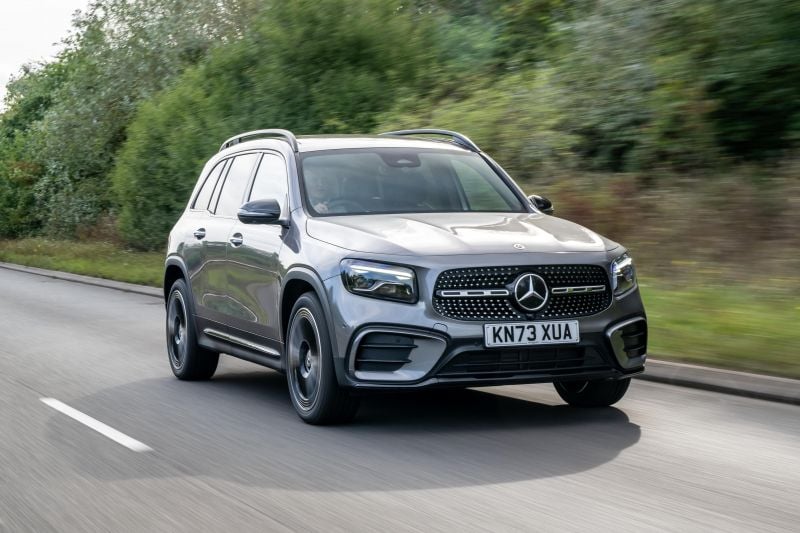
Overseas model shown
The steering is light in the city, and it’s tuned for comfort. That means speed bumps and the pimply surfaces common in Australian cities don’t ruin the mood behind the wheel, and you can park in tight spaces without massive biceps.
For a little engine, the 1.3-litre unit in the base GLB packs a decent punch once you’re up and rolling. But it can be awkward off the mark when you’re trying to creep slowly in traffic, juddering on light inputs before sharply engaging and surging forward.
Mercedes-Benz has done a good job smoothing out the powertrain’s rougher edges. It’s less awkward here than in its other applications, and with a bit of time you can drive around its quirks – but there’s no escaping the yawning pause when you flick from drive to reverse, or the occasional stunted start.
You’ll notice the engine needs to kick down up hills with only one person on board, and sometimes needs to drop one, two gears with a heavier load to keep its speed up.
It’s not too noisy in the cabin, with a relatively refined bark, but you’re aware the engine is working hard at times which doesn’t feel particularly Mercedes-Benz.
The way it delivers its torque means all-wheel drive would be welcome as well; the transmission kicks in sharply when you try to accelerate quickly away from the lights, which in the wet can leave the front wheels spinning.
With light steering and upright pillars, this is an easy car to place in town.
As seven-seaters go it’s a very easy one to drive in tight spaces, or to park in narrow underground spots at your local supermarket.
At higher speeds, the GLB is a comfortable cruiser. Although it’s working to get to the legal limit at times, once you’re there the engine settles down and the chubby tyres make for a quiet, refined drive.
Compared to the A-Class and GLA, both of which can get a bit shouty on coarse chip country highways, the GLB is quieter and more refined. It’s still not going to give a GLC any sleepless nights, but it’s better than its platform mates.
Mercedes-Benz has long been a pioneer in the active driver assistance space, and the GLB possesses a set of polished tools to take the load off on long journeys.
The adaptive cruise control confidently maintains a gap to the car in front, and the active lane centring system holds the car between the white lines without ripping the wheel out of your hands.
Features such as the automatic lane change, which handles steering and checks your blind spot when you flick the indicator, elevate the GLB over some rivals.
Mercedes-Benz also does some of the best cameras in the business, which means there’s no excuse for dinged wheels or bumpers.
What do you get?
On test is the entry-level GLB 200.
Mercedes-Benz GLB 200 and GLB 250 4Matic highlights:
- 19-inch AMG five-spoke alloy wheels
- Run-flat tyres
- Panoramic sunroof
- AMG Line exterior
- Privacy glass
- Hands-free power tailgate
- LED headlights
- Adaptive high-beam
- Electric folding side mirrors
- Adjustable damping
- 10.25-inch digital instrument cluster
- 10.25-inch touchscreen infotainment system
- Wireless Apple CarPlay, Android Auto
- Wireless phone charger
- DAB radio
- USB-C port
- Tri-zone climate control
- Ambient interior lighting
- Nappa leather-wrapped steering wheel
- Artico/Microcut upholstery
- Proximity entry and push-button start
- Heated front seats
- Electric front seats with memory
Is the Mercedes-Benz GLB-Class safe?
The Mercedes-Benz GLB received a five-star ANCAP safety rating in 2020 based on testing conducted by Euro NCAP in 2019. This rating only applies to the GLB 200 and GLB 250 4Matic.
| Category | Mercedes-Benz GLB |
|---|---|
| Adult occupant protection | 92 per cent |
| Child occupant protection | 88 per cent |
| Vulnerable road user protection | 78 per cent |
| Safety assist | 76 per cent |
Standard safety equipment includes:
- 9 airbags
- Autonomous emergency braking
- Blind-spot assist
- Exit warning
- Lane keep assist
- Adaptive cruise control
- Traffic sign recognition
- Driver attention monitoring
- Emergency SOS calling system
- Semi-autonomous parking assist
- Front and rear parking sensors
- Surround-view camera
How much does the Mercedes-Benz GLB-Class cost to run?
The Mercedes-Benz GLB is covered by a five-year, unlimited-kilometre warranty. As is the case across the Mercedes-Benz lineup, it’s a pricey car to service.
| Running costs | Mercedes-Benz GLB 200 |
|---|---|
| Warranty | 5 years, unlimited kilometres |
| Roadside assistance | 5 years |
| Service intervals | 12 months or 25,000 kilometres |
| Capped-price servicing | 5 years |
| Total capped-price service cost | $5200 (5 year service package) |
CarExpert’s Take on the Mercedes-Benz GLB-Class
The GLB remains a unique, capable option in Australia.
Mercedes-Benz has done an excellent job making the most of a relatively small package, with an impressively flexible cabin and refined manners on the road when you consider it’s a family SUV running a little engine.
That’s where the shine starts to come off the GLB 200. The base engine has just enough punch, but load it up with seven people (or five and their things) and it starts to feel a bit strained… which isn’t very Mercedes-Benz.
The same can be said of the gauche trim and cheap interior finishes, which feel out of place in a $75,000 car.
With its more powerful 2.0-litre turbocharged engine and all-wheel drive, the GLB 250 sitting above the 200 in the range doesn’t solve the interior trim issues, but it does at least get you a powertrain with more headroom if you’re planning to spend lots of time on the open road.
As it stands, the GLB 200 is a good idea executed well – but not as well as it otherwise could have been.
Interested in buying a Mercedes-Benz GLB? Get in touch with one of CarExpert’s trusted dealers here
Click the images for the full gallery
MORE: Everything Mercedes-Benz GLB

